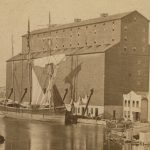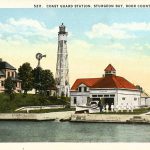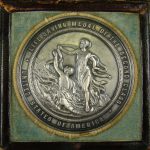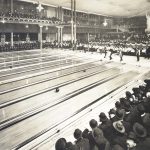On September 10, 1875, six rescue boat volunteers were dispatched to aid the crew of the Tanner, a cargo ship foundering in Milwaukee Harbor after being struck by a powerful storm. All six of the rescue boat volunteers – but not the captain or crew of the tug boat J.J. Hagerman – were awarded Lifesaving Medals of the Second Class from the U.S. Lifesaving Service. These were the second medals of this class ever awarded.
A Mixed Group
The recipients were not professional lifesavers, but a mixed group of volunteers drawn from the Milwaukee waterfront. The four men in the lifeboat who plucked sailors from the water were Anton G. Oleson, a sailor; John McKenna, mate of the steamship Jacob Bertschy; Henry W. Lee, a foreman caulker; and a sawyer, Harry Spark. The latter two probably worked at the nearby Wolfe & Davidson shipyard. Benjamin Oleson (profession unlisted) and ship captain N.A. Peterson assisted the rescued mariners aboard the scow, the flat-bottomed boat used in the rescue mission. [1]
N.A. Peterson, International Man of Mystery
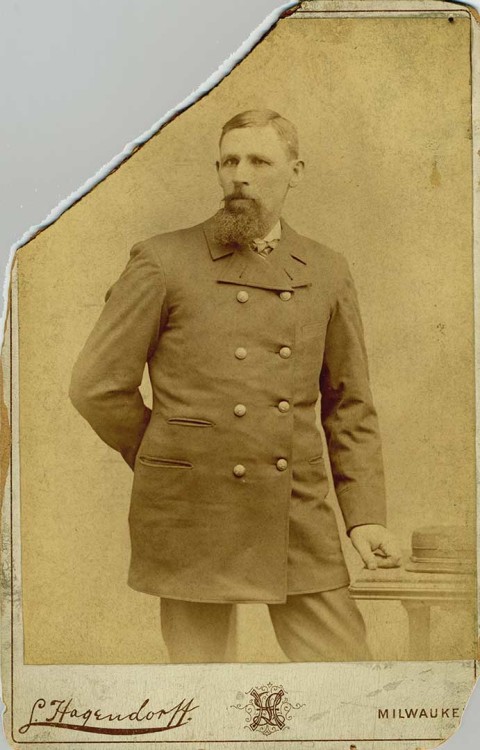
Some historical figures are elusive, and N.A. Peterson is one of them. In all of the shipwreck accounts as well as his official commendation letter, Peterson is identified simply by his first initials. Other historical records usually refer to him as “Nels,” but the spellings of both his first (Nels, Neils, Nelson, Nicholas) and last name (Peterson, Petersen) vary. He only received a one-sentence entry in a standard maritime reference.[2] To complicate matters, there was another Nels Peterson (1834-1894), based in Chicago, who was also born in Norway in the 1830s, immigrated to the United States around the Civil War and worked as a ship captain on Lake Michigan in the 1870s and 1880s. The photo on this page was probably collected in error by a researcher seeking an image of the Chicago captain Nels Peterson.[3]
According to United States Census records and Milwaukee City Directories, Peterson was born in Norway in 1837 and arrived in the United States in the early 1860s, where he found work as a sailor and a carpenter. By 1875 he had become a “captain,” and a few years later he became part owner of at least one schooner.
A New Career
Earning a lifesaving medal did not change Peterson’s career overnight – Milwaukee City Directories list him as “captain” or “lake captain” through 1884 – but it did offer an alternative. Peterson became the third keeper of the Milwaukee Lifesaving Station on December 17, 1884. (Even the Coast Guard’s history of the Milwaukee station lists him as “Neils”).[4] Peterson resigned this post eight years later, on October 23, 1893 at age 56. Because of the physical demands of the job, keepers over the age of 55 were required to pass an annual medical examination.[5] Whether Peterson failed the exam or retired voluntarily is unknown. He seems to have left maritime work behind. From 1894 through 1909, Milwaukee city directories list Peterson as a “laborer,” though the 1905 Wisconsin Census again identifies him as a sailor. By 1912, at age 75, Peterson appears to have retired. He died in Milwaukee around 1920.
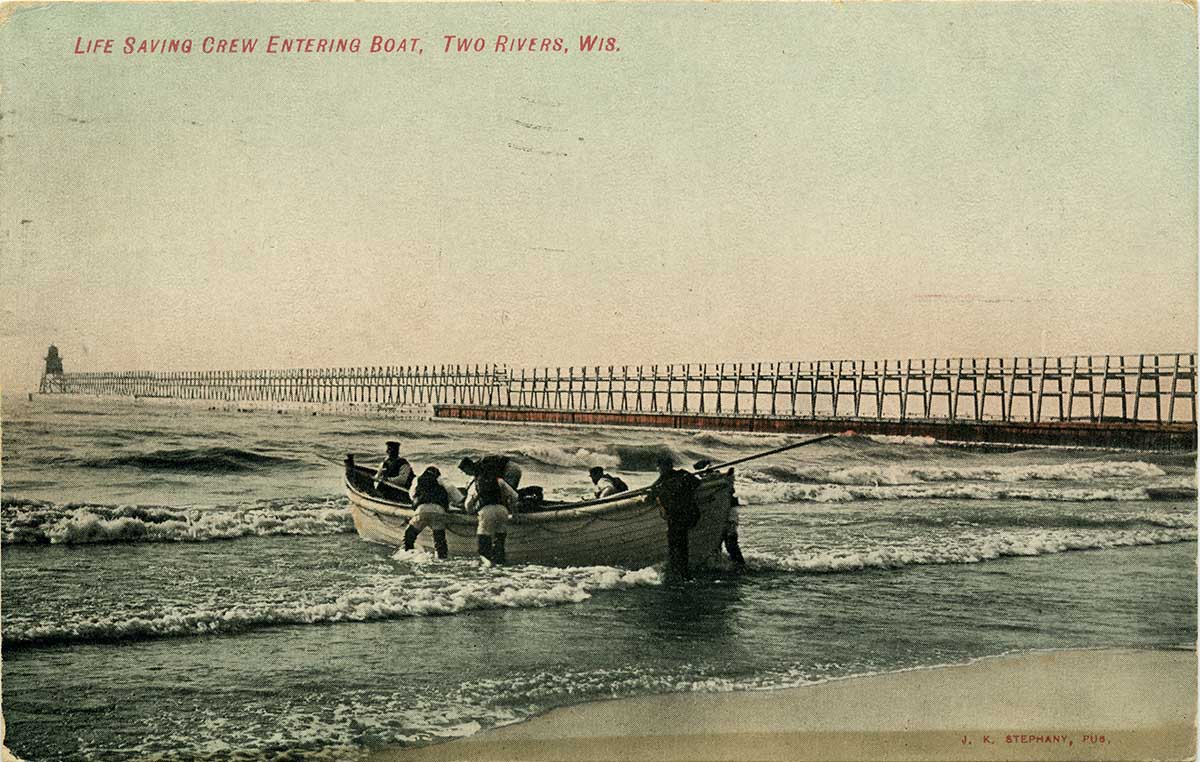
Written by David Driscoll, April 2015.
FOOTNOTES
- The medal awarded to Anton Oleson is in the collections of the Milwaukee Public Museum.
- Knut Gjerst, Norwegian Sailors on the Great Lakes (Northfield, Minn.: Norwegian-American Historical Association, 1928), 165.
- The photo was collected by Waldemar Ager, historian of the 15th Wisconsin Infantry Regiment, a primarily Norwegian Civil War regiment. No Nels Peterson fought in that regiment, but the Chicago captain Nels Peterson built the schooner Col. Hans Christian Heg, named after the commander of the 15th Wisconsin, who was killed at Chickamauga.
- U.S. Coast Guard History Program, “Station Milwaukee, Wisconsin.” Accessed October 27, 2014. https://www.history.uscg.mil/Browse-by-Topic/Assets/Land/All/Article/2667586/station-milwaukee-wisconsin/.
- Frederick Stonehouse, Wreck Ashore: The United States Life-Saving Service on the Great Lakes (Duluth: Lake Superior Port Cities Inc., 1994), 29.
Featured image: Lifesaving Service crew, about 1910. This image, which was taken by Milwaukee photographer J. Robert Taylor, likely shows the crew of the Milwaukee station. Wisconsin Historical Society Image ID 55832.
